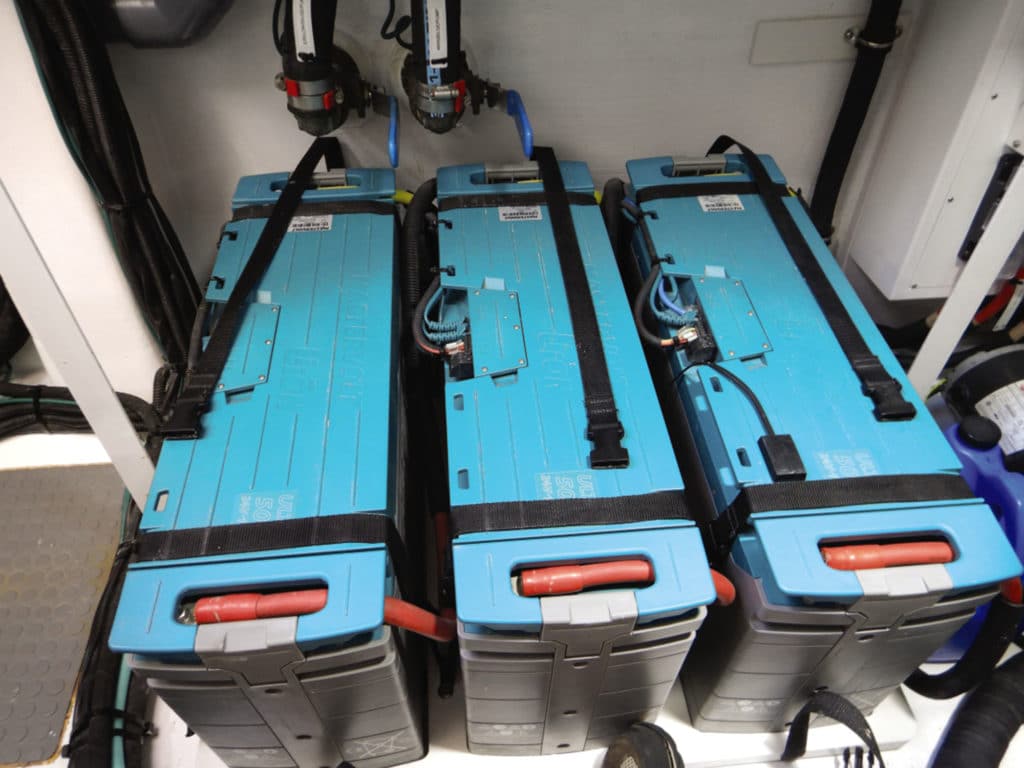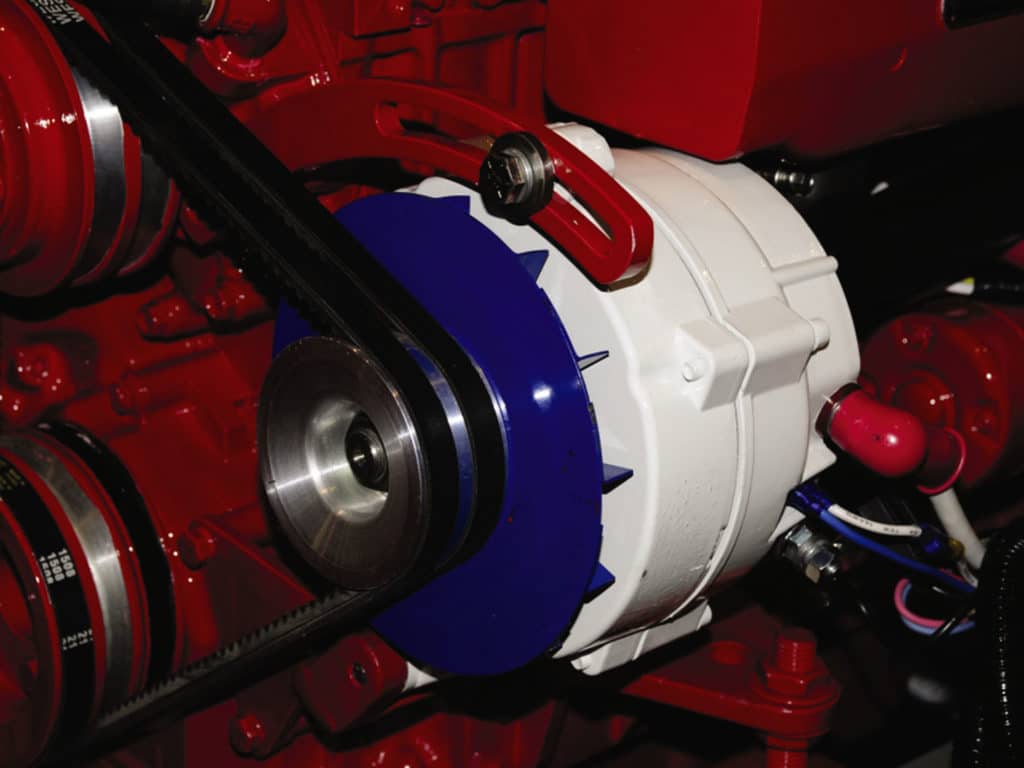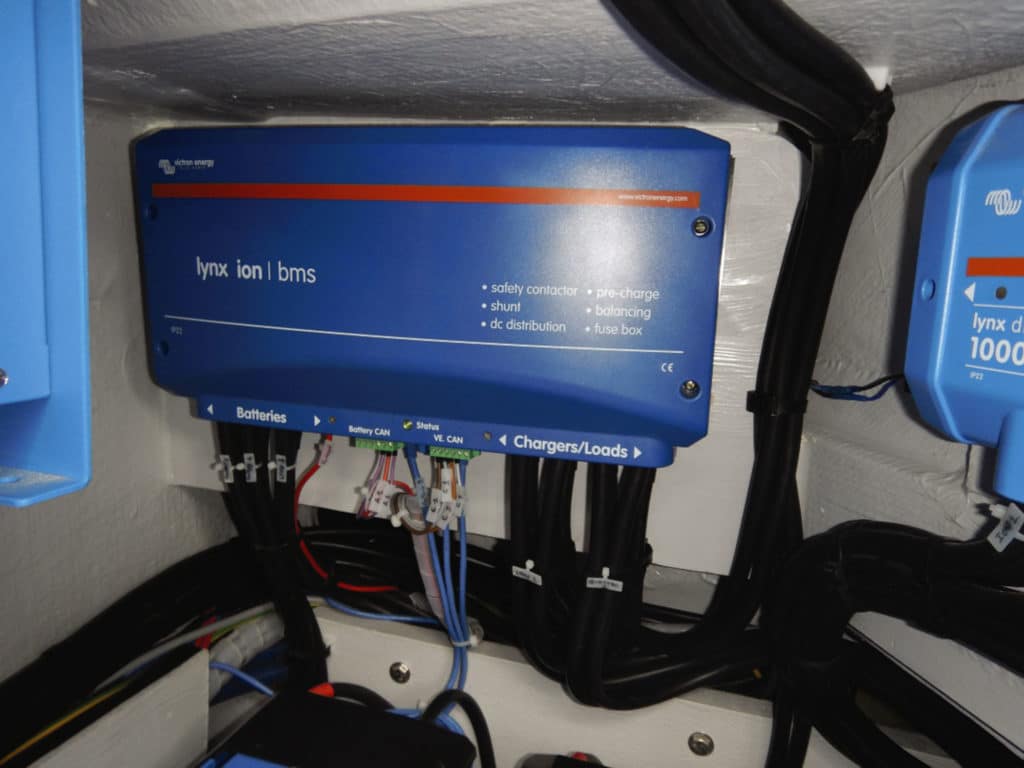
Lithium-ion batteries are a hot topic in the sailing community these days, and many sailors wonder if they’re a practical option. They actually come in a variety of chemistries, each with its own set of advantages and potential pitfalls; lithium-iron-phosphate, or LFP, options are getting the most traction in the cruising-under-sail and powerboat ranks. While there are other lithium-ion batteries that offer greater efficiency and energy density, the LFP variety represents the greatest balance of safety and performance.
When compared with AGM (absorbent glass mat) lead-acid batteries, the primary advantages of lithium-ion are efficiency-based, especially the ability to be charged very rapidly, several times faster than AGM chemistry. They can also be deeply discharged, down to 10 or 20 percent state of charge (compared with AGM’s 50 percent state of charge), without shortening their life span. And they can be left in a partial state of charge for an extended period of time without suffering the ill effects of sulfation. In fact, it’s best to avoid leaving them fully charged, a condition most LFP battery management systems (BMS) intentionally avoid. In addition to being able to endure deeper discharges, LFP batteries can be cycled many more times than lead-acid batteries. Finally, lithium-ion batteries are significantly lighter than their lead-acid brethren.
As a result of the increased energy density, converting from lead-acid to lithium-ion yields either greater amp-hour capacity in the same footprint with less weight, or the same energy capacity for a smaller footprint and even less weight.
Thus far, then, lithium-ion seems like a win-win option, so why wouldn’t any boat owner or builder make the switch to this seemingly miraculous electrical technology? As is often the case, there is a price to pay for improved performance, and lithium-ion is no exception, both literally and figuratively.

Perhaps the most noteworthy difference between lithium-ion and lead-acid technology is cost; lithium-ion batteries, depending on the size and type, cost several times more than lead-acid. However, with the extended cycle/life span and faster charge times (this assumes more charge current can be brought to bear)—which equates to shorter engine or generator run time—the difference in cost over the life of the battery bank is diminished, potentially even to the point of parity.
Then, of course, there’s the safety factor. Who hasn’t seen the videos of exploding cellphones or smoldering electric cars? While it’s true that these examples involved lithium-ion batteries, none employed the LFP chemistry. Once again, LFP is among the safest of the lithium-ion chemistries; when comparing the Material Safety Data Sheets for LFP and AGM batteries, the distinction is clear, and it might come as a surprise to many that the warnings associated with the latter are direr.
The final distinction involves complexity. While advanced, high-output lead-acid charging systems can be complex, lithium-ion batteries rise to a higher level of complexity, for one primary reason: safety. While overcharging a lead-acid battery can, in rare cases, lead to overheating and fire, overcharging a lithium-ion battery can also have the same effect (there are many online videos that illustrate this issue well).
Lithium-ion batteries are also susceptible to issues when charged at especially high or low temperatures, which could make tropical or winter use problematic. It is, therefore, essential that lithium-ion batteries be “managed” by the aforementioned BMS. These management systems, which can be either external or integral, ensure that a lithium-ion battery cannot be overcharged or overdischarged (the latter can also damage the battery, or lead to overheating). Most BMS are designed to be fail-safe, meaning that they will prevent harm to the batteries, as well as avoid battery overheating and fire.

Perhaps the most important caveat of all concerning lithium-ion batteries is the value of opting for an integrated system, designed specifically for marine applications, and supplied by a reputable manufacturer. The internet is rife with examples of inexpensive, “homebrew” lithium-ion systems, used both ashore and afloat. While the users of these systems are free to do whatever they wish, the risk associated with these is substantially greater than vetted, properly engineered, BMS-controlled systems.
Finally, the American Boat and Yacht Council recently released a technical information report called “TE-13, Lithium-Ion Batteries,” which is a guide for manufacturers and installers of lithium-ion battery systems. If you are considering installing such a system, or purchasing a vessel that has one, make certain it—and the installation—complies with this guideline.
Steve D’Antonio offers services for boat owners and buyers through Steve D’Antonio Marine Consulting.








